Exploring Burgundy The Province
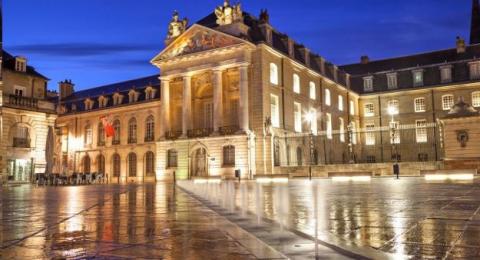
Burgundy’s wines are among the most celebrated in the world. Indeed, Montagny, Meursault, and Chassagne-Montrachet are just a few that demonstrate this region’s fervent devotion to terroir and tradition. I adore Burgundy’s wines. But sometimes I wonder why “Burgundy the Wine” is so much more famous than “Burgundy the Province.”
Follow this itinerary revealing the charming persona of this hidden gem—its main train station is located only an hour and a half south of Paris—and you’ll see what I mean.
Beginning in the tree-shaded provincial capital of Dijon, which the Dukes of Burgundy spent a fortune to beautify, you’ll get an excellent sense of the region’s heritage. The Burgundy Dukes. This powerful duchy ruled Burgundy for generations in the Middle Ages, challenging the country of France itself (it was still a time of fragmented duchies and kingdoms throughout Europe).
In the heart of Dijon, you’ll find their Ducal Palace, a sprawling edifice built more than 1,000 years ago, from which the dukes ruled for generations. This conglomeration of buildings comprises several different parts, the oldest of which is the Gothic Ducal Palace, dating from the 14th and 15th centuries. Another section houses the fine arts museum, where you’ll come face to face with some of the most famous dukes themselves—at least their flamboyant tombs.
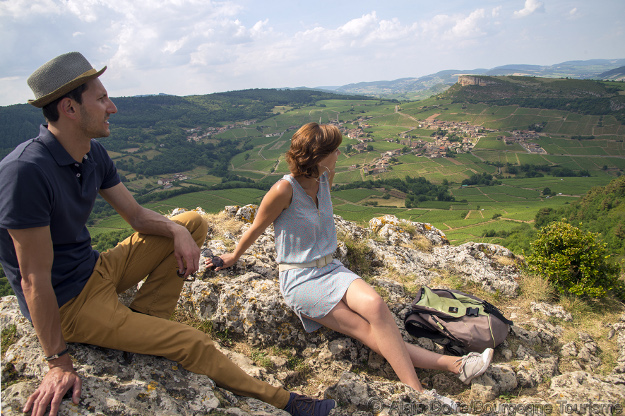
Four different dukes ruled during Burgundy’s Golden Age, between 1364 and 1477: Philip the Bold, John the Fearless, Philip the Good, and Charles the Bold. Each married into powerful families, thereby extending their domains and enhancing their already sumptuous, active court life. Their medieval holdings extended as far as present-day Belgium and the Netherlands, and they used their wealth to patronize lavish, tile-bedecked architecture, masterful art, and a rich gastronomy that remain striking testaments to their fine taste to this day.
This was a time when France was a separate kingdom, ruled by feeble kings. And, as history buffs will recall, this was the era of the Hundred Years War between France and England (it started in 1337). The Burgundy dukes sided with the English, in effect against their enemy, the French.
Perhaps the most poignant moment of that time came with Joan of Arc, the young maiden who vowed to drive the English from France. The Burgundy ruler at the time, Philip the Good, arrested her and handed her over to the English for a huge ransom. She went on to be burned at the stake. And this is just one small example of their treachery, conspiracy, and not-so-good ways. The province was finally absorbed into France in 1477.

From Dijon, go south about an hour through rolling, village-dotted vineyards to the walled, wine capital of Beaune. Nearly every other shop in this charming village relates to wine, whether it’s a wine seller, a wine-tasting school, or cheesemonger or chocolatier devoted to complementing the wine. Even the main historic site, the Hospices de Beaune (or Hôtel-Dieu), has a connection. This grand hospital for the poor, with its famous polychrome-tiled roof, was the 15th-century gift of a wealthy son who hoped to finance his way to heaven. Over the course of five centuries, vintners donated acreage to the charity, making it one of the region’s largest landowners. Today the building is a fascinating museum, with one of its most revered holdings being Rogier Van der Weyden’s polyptych on the Last Judgment, which was commissioned specially for the hospital. And every November, the Hôtel-Dieu holds a wine auction, “Les Trois Glorieuses,” full of coveted, wine-besotted events with proceeds going to local charities.
Obviously, this being Burgundy, you can’t ignore the wines. The vineyards are everywhere, swaths of pinot noir and chardonnay gracing the region’s undulating slopes and valleys. Indeed, these bewitching grands crus recently merited recent World Heritage status for their unique climate and terroir. And you can thank the medieval monks for that. While the dukes were creating their wealth, the friars were developing vineyards in tiny parcels separated by stone walls, called clos, thereby creating different terroirs. Experts will tell you that one terroir can be completely different than another located just 200 yards away, in its unique combination of geology, soil characteristics, exposure to sun, and altitude.
Here’s an example: The famous Clos de Vougeot appellation, named after wine cellars built in 1115 by Cistercian monks from Cîteaux Abbey, contains only 125 acres. But within those few acres, 80 producers own small parcels that produce 80 completely different wines.

Burgundy wine-tasting is an intimate affair, with most of the tasting coming straight from the barrels. There are plenty of wine tours to help you navigate the complexities. You can even go by jeep or limousine ( or, even better, by bike) . The province boasts some 500 miles of picturesque, sign-posted lanes.
One of the best is the intimate Voie des Vignes (Vineyard Route) from Beaune to Santenay. Off in the distance rise vine-clad hills, dotted with the occasional steeple or clock tower. Note that for pure wine-tasting, most of the wineries are located within the villages (and you need to call ahead to make an appointment). If you want to taste with a vineyard view, buy a bottle from your favorite winery, spread your blanket in a sun-blessed spot, and toast the beauty around you.
The monks left their mark in the vineyards, for sure, but, they also left their mark in the Romanesque monasteries still sprinkling the countryside. The most famous is Cluny, once the richest and most powerful medieval abbeys in Christendom, dominating Europe for hundreds of years. Established in 940, it hosted more than 1,000 monks—more than the population of most towns at the time. Alas, only a single transept and a few smaller buildings remain, the rest victims of French Revolutionary sledgehammers. Even so, a handful of reconstructions, with the aid of interactive iPads provided on the guided tour, give a hint of the grandeur that was. The surrounding village showcases 140 surviving Romanesque edifices built to house monastery workers. And, if you look carefully, you’ll see that many of the houses contain fragments of the monastery, taken after it was dismantled in a form of architectural recycling.
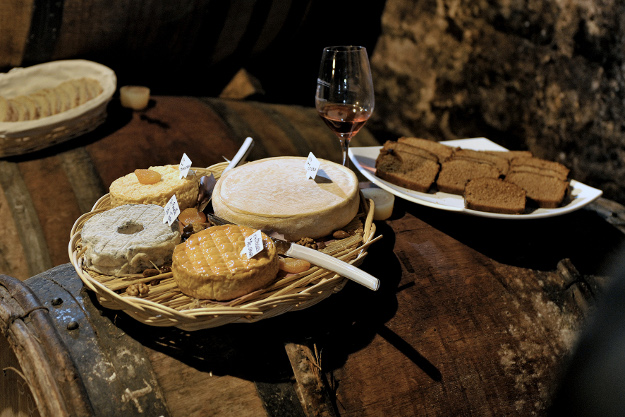
There are other famous abbeys in the region as well, including Vézelay, a beautiful Romanesque basilica located atop a hill. Medieval pilgrims flocked here to venerate the relics of St. Mary Magdalene before embarking on the sacred route to Santiago de Compostela. Check out the shells embedded in the roads, pointing the way. And near Montbard, you’ll find the peaceful Abbaye de Fontenay, a Cistercian monastery founded in 1118 and restored to its former glory. The meticulously landscaped grounds give a sense of how tranquil this setting must have been—best experienced in the early morning, before the crowds descend.
And with that, we haven’t even gotten to the region’s gastronomy, which extends far beyond the eponymous boeuf bouguignon. Charolais beef, Bresse poultry, Burgundy snails, black currants, gingerbread, Dijon mustard, marbled ham, pigeon, and Epoisses cheese are just some of the delectable regional products used in the inestimable Burgundian cuisine, refined over the centuries.
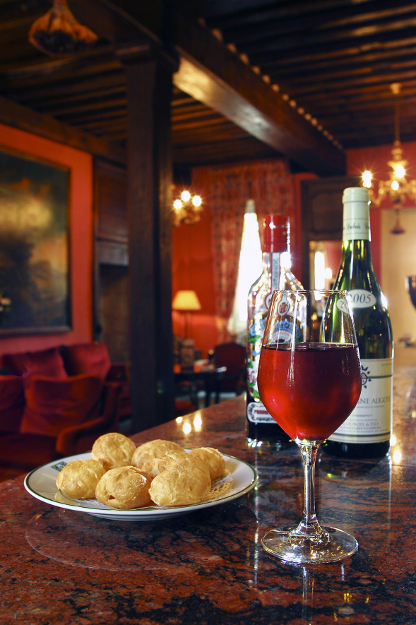
And with one of the world’s highest concentrations of Michelin star restaurants, foodies will be in gastronomic heaven. One of the best restaurants in the world is three-starred Maison Lameloise in Chagny, occupying a charming 15th-century coach house. Esteemed Chef Éric Pras whips up such regional delicacies as wild turbot with green and white asparagus, served with mustard and mint sabayon; suckling veal chop rubbed with marjoram and orange; and roasted pigeon glazed with a milk reduction and a side of eggplant mousse. Local wine pairings are recommended specially by the in-house sommelier. (And if you find you’ve eaten too much to budge, the restaurant offers refined boutique hotel rooms as well.)
Restaurant Loiseau des Vignes in Beaune is another popular choice, where dinner might include bird-tongue risotto, farm-fresh chicken from Louhans in a light mustard sauce, and baba cake smothered in prune liqueur. No doubt, wherever you go in Burgundy, food presentation is brought to the level of fine art. And the taste is even better.
All that said, Burgundy also has a way with accommodations and offers lots of options, including vineyard châteaus, palatial retreats, and rustic farms. Among the best is Abbaye de la Bussière, where all of Burgundy’s history and charm seem to come together. Formerly a 12th-century Cistercian abbey, this Romanesque architectural gem has been masterfully transformed into an exquisite, super-luxe abode. Stained-glass windows cast shots of pellucid color on soaring arches, marble statues, and thick medieval walls. The best rooms, all antiques and rich toiles (and Jacuzzis), look out over the 17-acre park, complete with ornamental lake. It’s virtually guaranteed you will sleep like a duke or duchess.
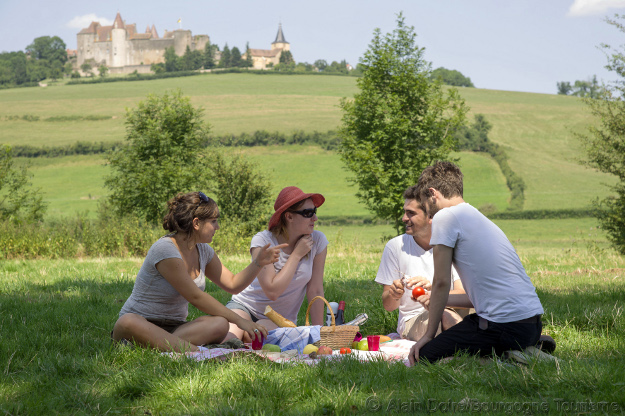
This is all just a small sampling of what Burgundy the Province is all about. We haven’t even touched on the canals and the opportunity to take barge rides, or all the adorable hilltop villages built around turreted castles (mostly once belonging to Burgundian dukes). But that’s the beauty of Burgundy the Province. There’s always something fascinating and enchanting awaiting just around the next corner. You just need to take the time to get to know her.
Author Bio:
Barbara Noe Kennedy worked as an editor at the National Geographic Book Division for more than 20 years. She has written four books, and her writings have also been published in National Geographic, The Daily Telegraph, and the Los Angeles Times, among other publications.
For Highbrow Magazine





























































































































































































































































































































